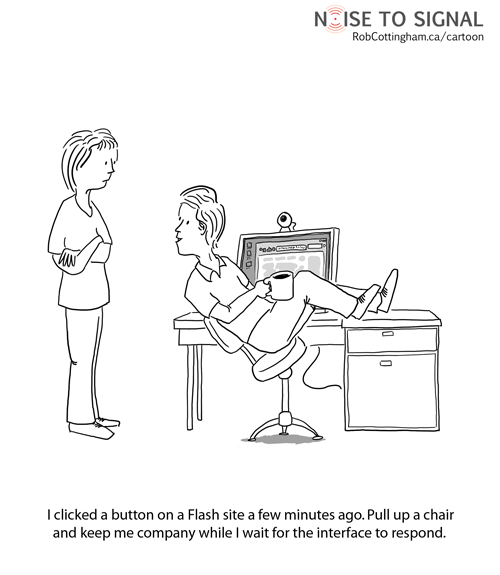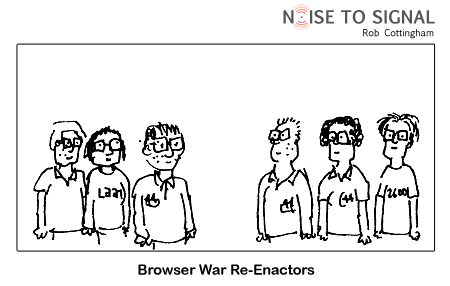Hey, have you checked out Damage Control? It’s a new comic strip from yours truly, and it just launched this morning!
Originally posted on ReadWriteWeb
The other day, I was at a local coffee shop trying to troubleshoot a page on my cartoon site. I didn’t have my trusty laptop with me, but I no worries — I had my iPad, which is practically the same thing, right?
Until I opened the page in Safari, and had a look at the source.
Or, rather, didn’t. It turns out Safari in iOS – you’re going to want to sit down for this – doesn’t have a “View Source” command.
Now, if I’d dug a little, I would have found many others in my position. I would have discovered any number of JavaScript-based bookmarklets for creating an ersatz View Source command in Safari on the iPad. I might even have come across the miracle known as Firebug Lite, a bookmarklet that replicates much of the functionality of that venerable web developer’s tool.
Instead, I opened the page in Atomic Browser. Which (ahhhh!) does let you view the source of a web page.
“You don’t know what you’ve got ’til it’s gone,” sang Joni Mitchell in 1970, which is how I know she had access to very early Firefox and iPhone betas. Because only someone who has had access to View Source, and then lost it, could understand the concept of loss well enough to write those words.
View Source is more than just a menu command; it’s the Rosetta Stone to web innovation.
View Source turns “take it into the shop” into “pop open the hood and see what’s broken.”
View Source turns “How did they do that?” into “So that’s how they do that.”
View Source turns “I did this once” into “Everyone can do this again and again.”
View Source turns a dozen people reinventing the same wheel into a dozen better wheels.
View Source turns a magician revealing her secrets into tens, hundreds or thousands of new magicians.
In short, View Source is a big part of what puts the “write” in the read-write web.
(Credit where it’s due: while I made some progress on my own, the solution to my problem ultimately came thanks to Michael Sisk, creator of the free Webcomic WordPress plugin that powers Noise to Signal — as well as Damage Control, the comic I launched today.)
Update: Lloyd Budd points to this blog post by Chris Messina, from a mere four years ago, celebrating the joys of view source with far more precision than I can muster.





